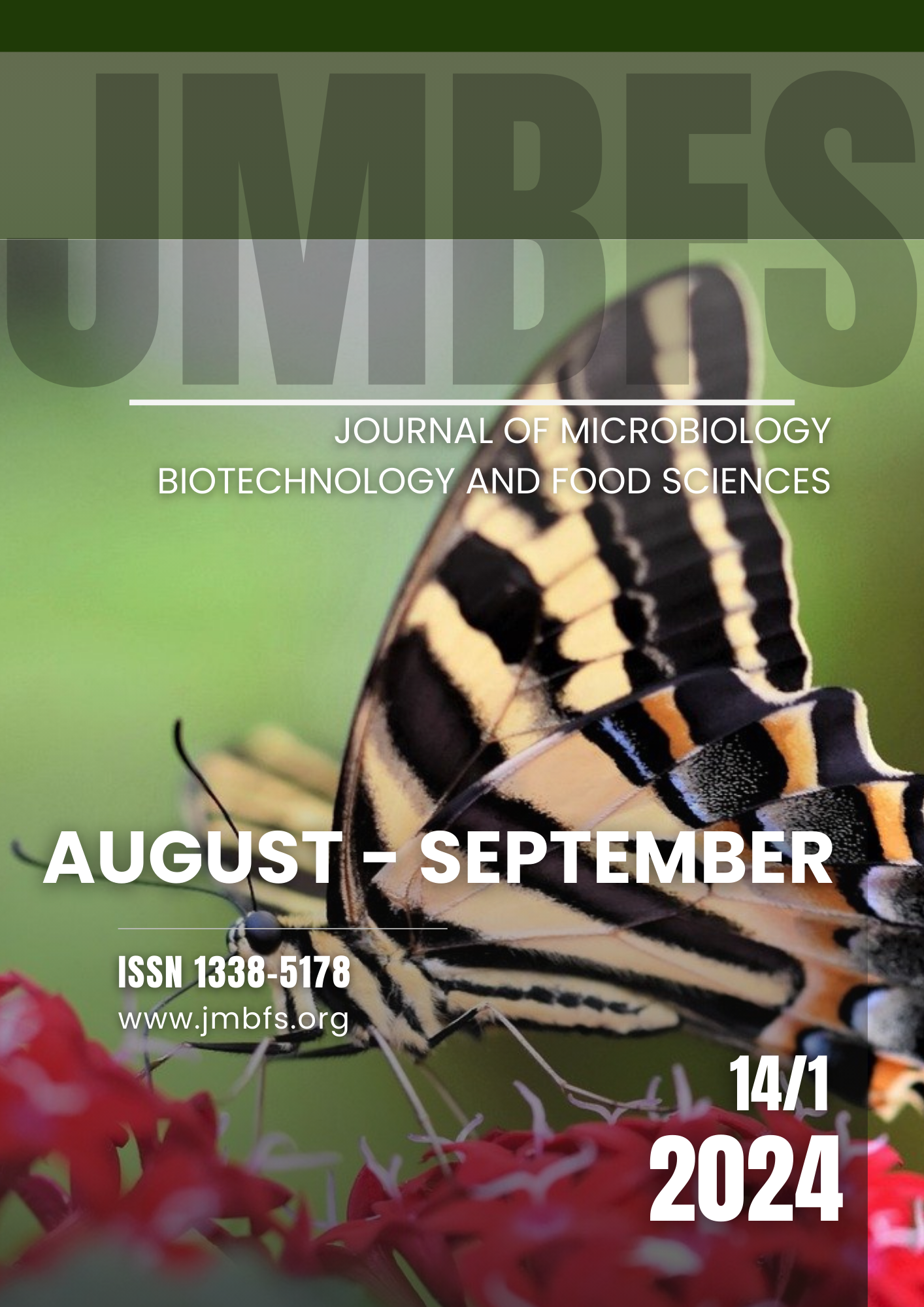RAPD MARKERS ARE EFFECTIVE TOOL FOR THE DIFFERENTIATION OF COMMON AND TARTARY BUCKWHEAT GENOTYPES
DOI:
https://doi.org/10.55251/jmbfs.10524Keywords:
Random Amplified Polymorphic DNA, polymorphism, Fagopyrum esculentum Moench, Fagopyrum tataricum Gaertn, dendrogram, PCoAAbstract
Common and tartary buckwheat are important cultivated species of the genus Fagopyrum. Genetic polymorphism of thirty-five genotypes of common buckwheat (Fagopyrum esculentum Moench) and tartary buckwheat (Fagopyrum tataricum Gaertn.) was analyzed using 10 random amplified polymorphic DNA (RAPD) primers. A total of 119 DNA fragments were amplified using ten RAPD primers with an average of 11.9 fragments per primer. The number of amplified fragments ranged from 6 (OPB-08) to 16 (SIGMA-D-01). PIC values ranged from 0.782 (OPC-08) to 0.919 (SIGMA-D-01) with an average of 0.871 per primer. The marker index (10.364) and diversity detecting index (2.961) were high and presented the utility of used marker technique. To evaluate the genetic relationships among buckwheat genotypes a phylogenetic tree based on UPGMA algorithm was constructed. The genotypes of common and tartary buckwheat were separated independently into cluster I and II. Cluster I separated 14 genotypes of tartary buckwheat into two subclusters (Ia, Ib). Genotype 903016, which originated in Pakistan, was separated individually into the subcluster Ia. Cluster II included genotypes of common buckwheat and was further subdivided into subcluster IIa and IIb. Two genotypes of subcluster IIb (Bamby and Hruszowska) were genetically the closest. Bamby and Hruszowska reflected the maximum similarity value (0.605) according to Jaccard’s coefficient of similarity. Based on the presented data it is suggested that the RAPD technique is suitable for differentiation among genotypes of common and tartary buckwheat. RAPD primers have proven to be reliable and useful method for studying genetic variability of buckwheat genotypes.
Downloads
Downloads
Published
How to Cite
Issue
Section
License
Copyright (c) 2023 Zelmira Balazova, Lucia Čišecká, Zuzana Hromadová, Zdenka Gálová, Martin Vivodík, Milan Chňapek

This work is licensed under a Creative Commons Attribution 4.0 International License.
All papers published in the Journal of Microbiology, Biotechnology and Food Sciences are published under a CC-BY licence (CC-BY 4.0). Published materials can be shared (copy and redistribute the material in any medium or format) and adapted (remix, transform, and build upon the material for any purpose, even commercially) with specifying the author(s).





